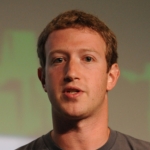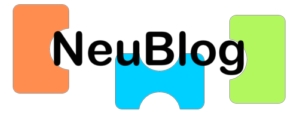
In this blog, we will be sharing the capabilities of the NeuLog Sensors and Modules, and how their data collection software/application can benefit both teachers and students. We will also suggest some tricks and tips we have learned in our experience.
For any questions or comments write to us at info@neulog.com.
GSR experiments
30/06/2025
The Galvanic Skin Response (GSR) sensor is an amazing sensor that enables us to measure human body response to stimulations like touch, smell, sight, sound or emotion conditions like stress, excitement, fear etc.
A short video describing how the GSR is connected and works.
The GSR sensor set includes the following:
- BLT-202 USB/Bluetooth communication module
- NUL-217 GSR logger sensor
With the GSR set and Emotional stress measurement experiment you can:
- Understand the fight or flight response.
- Examine how stimulation of the human system (by touch, smell, sight or sound) causes the sweat glands in the hand to secrete sweat.
- Understand the principles of a polygraph (lie detector).
- Explore the concept of biofeedback.
- Understand Progressive Muscle Relaxation (PMR) and Virtual Reality Exposure Therapy (VRET) using GSR.
With the GSR set and Sense of touch experiment you can:
- To understand that the skin is the largest sensory organ in the body.
- Explore how the skin detects touch, pressure, temperature, and pain.
- Identify which parts of the body are the most sensitive to touch.
- To recognize that fingers, lips, genitals, and toes are among the most sensitive areas of the body.
Emotional and sensory stimulation triggers sweat production.
The GSR (Galvanic Skin Response) logger sensor measures sweat secretion from the sweat glands in the hand. When stimulation occurs, sweat levels increase, leading to higher skin conductivity.
These lesson plans can be found in Biology experiment page in this site.
* These experiments are based on Morris Tischler’s book ‘Concepts of Biotechnology’.
The fight-or-flight response is activated in reaction to an acute threat, preparing the body to either react or retreat.
When a threat is perceived, the sympathetic nervous system (a part of the autonomic nervous system) is activated, releasing the hormones noradrenaline and adrenaline.
These hormones bind to adrenergic receptors on peripheral tissues, causing:
- Pupil dilation
- Increased heart rate
- Elevated blood pressure
- Faster breathing
- Increased sweat production
Sweating helps the body dissipate excess heat generated by increased muscle activity.
GSR measurement is a key component of a Polygraph (lie detector). Lying induces a stress response, which is reflected in physiological changes.
GSR is also a simple yet powerful tool for analyzing physiological responses in biofeedback therapy.
Biofeedback is a technique that increases awareness of physiological functions using electronic monitoring, allowing individuals to learn how to control bodily responses voluntarily.
Progressive Muscle Relaxation (PMR) is a guided exercise where individuals follow instructions to regulate breathing and focus on different muscle groups.
Within 30 to 45 minutes, PMR can induce full-body relaxation, increase blood flow and reduce stress and headaches.
A typical GSR graph during PMR relaxation shows a decrease in skin conductivity, which means reducing stress.
Virtual Reality Exposure Therapy (VRET) presents individuals with computer-generated simulations of their feared environments, allowing them to encounter controlled phobic triggers.
VRET is a well-established treatment for phobias, such as: Claustrophobia, Arachnophobia, Cynophobia, Acrophobia, etc.
A typical GSR graph during VRET shows fluctuations in skin conductivity:
In the HB1 experiment, you will observe how humans react to emotional stimulation. You will measure sweat secretion in response to different stimuli and record the changes over time. You will exercise lie detecting and have a PMR script to practice.
THE SKIN AS a Sensory Organ
The skin is our largest sensory organ in the human body, covering its entire surface. The skin contains a variety of nerve endings that are highly responsive to pressure, pain, and temperature changes (hot or cold).
The skin is sensitive to several types of stimulation:
- Touch
- Pressure
- Cold
- Heat
- Pain
The fingers contain up to 800 nerve endings per square centimeter (1 cm x 1 cm). The following figure illustrates the areas of greatest sensitivity in the hand.
In the Sense of touch experiment, you will check which are the most and least sensitive parts of the body.
GSR Measurement ranges:
The NUL-217 NeuLog GSR logger sensor has two measurement modes: ɥS (micro-Siemens) and Arb (arbitrary units).
- The µS range measures absolute conductivity in microSiemens, which varies between individuals.
- The Arb range amplifies changes in conductivity, making it more useful for detecting relative responses.
When a person’s baseline conductivity is high, small changes may not be easily detected.
Therefore, Arb mode is preferred when tracking changes is more important than measuring absolute values, such as in lie detection experiments.
Heat experiments
16/06/2025
The easiest way to see how simple it is to perform experiments with a logger sensor and how many possibilities it allows is to use the following set:
BLT-202 USB/Bluetooth communication module
NUL-203 Temperature logger sensor
Heat Transfer experiment video
This video provides a detailed overview of the NeuLog software – both online and offline modes – and demonstrates its versatile functions.
Latent Heat experiment video
This video explores temperature graphs of boiling water in a kettle and freezing water in a refrigerator using NeuLog sensors.
The lesson plan Latent heat experiment, can be found in Physics experiment page in this site.
The three classical phases of matter are solid, liquid and gas. Gas particles are well-separated whereas liquid particles are closer together. Solid particles are tightly packed, and are structurally rigid. The following figure describes the different types of phase changes:
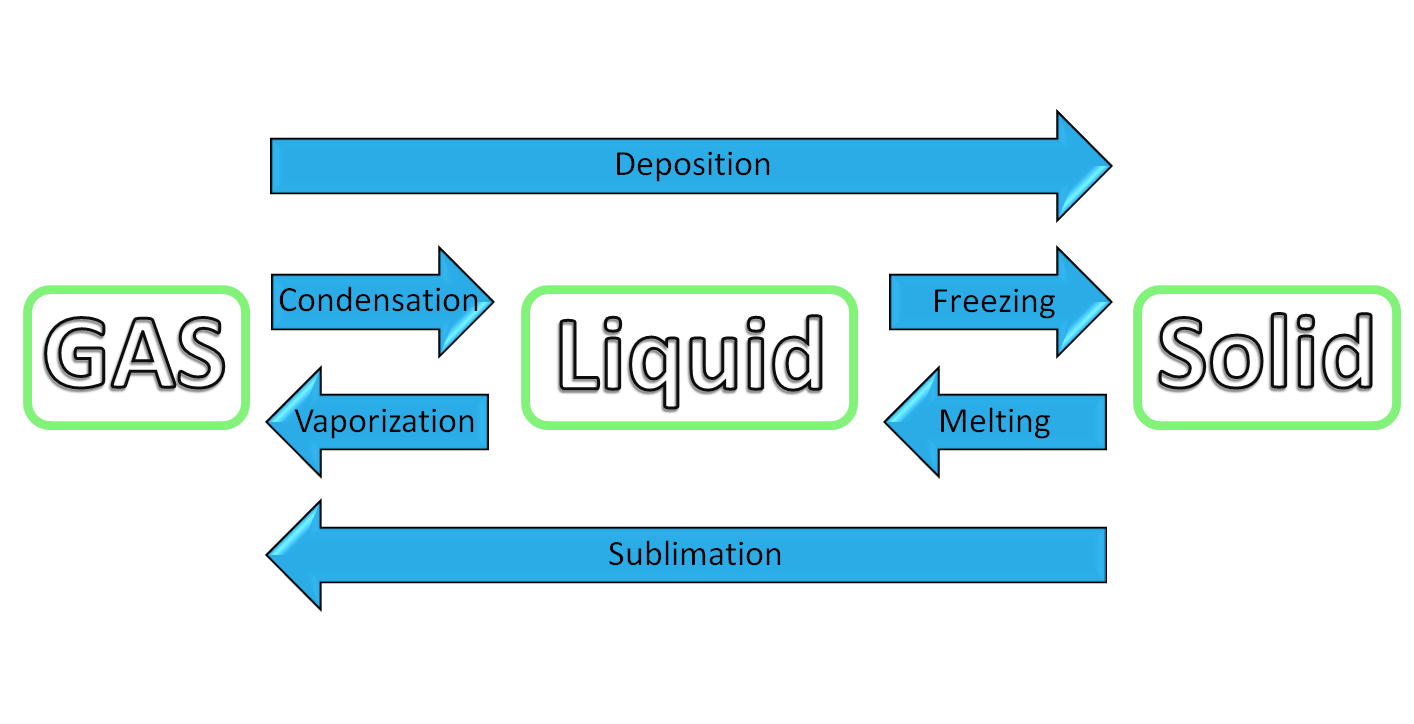
A heating or a cooling curve shows the change in temperature of a sample as it is heated or cooled. Sloped regions correspond to temperature changes in one of the different states. Flat regions (constant temperature) correspond to phase changes.
In this experiment we put the temperature probe in a kettle and see that while heating, the temperature stops rising at 100 Celsius degrees.
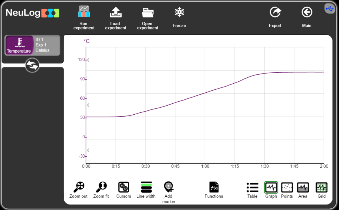
The reason for that is latent heat. Latent heat is the amount of energy absorbed or released by a substance during a change in its physical state (solid, liquid, gas) without a change in temperature.
In order to check the freezing state, we put the probe in a bottle with water and put the bottle in a freezer for 5 hours or more.
We can see that the temperature goes down and stays constant at 0 degrees Celsius. The temperature continues to go down when all the water has turned into ice.
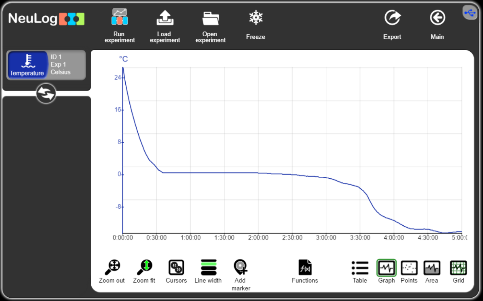
In this experiment we check also how salt affects the boiling and the freezing temperature points and to understand why we pour salt on icy roads.
The latent heat experiment is the fundamental for understanding distillation.
The lesson plan Distillation experiment, can be found in Physics experiment page in this site. This is an advanced experiment and requires a special kit for it.
Distillation is a purification method for liquids and separating liquid mixtures. It separates components of a mixture based on their boiling points (the temperature in which liquid changes into gas). It’s widely used both in laboratories and industrially, such as for refining crude oil or concentrating alcohol.
The general principle of distillation is starting with a mixture of liquids with different boiling points, heating the mixture to the first boiling point, cool down the vapor and collect the condensed liquid. This liquid is enriched with the lower boiling point component. The liquid that is left behind is enriched with the higher boiling point component.
In this experiment, we use a distillation kit to observe the distillation process by separating ethanol and food coloring from a solution.
Neuron Logger Sensors
14/05/2025
Sensors play a major role in science laboratories when conducting experiments in physics, chemistry, biology, and environmental sciences.
The NeuLog Logger-sensor is a unique answer to compatibility with all computer platforms.
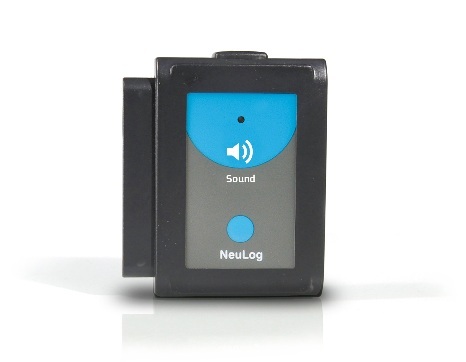
NeuLog sensors are logger-sensors.
Each sensor has a brain of a tiny computer that samples, processes and stores data.
The sensors may be plugged into one another to create a chain of sensors according to the required experiment.
A chain of logger-sensors needs only one Bluetooth/USB module in order to connect to any computer platform, either by wire (USB) or wirelessly (Bluetooth), using a single communication channel.
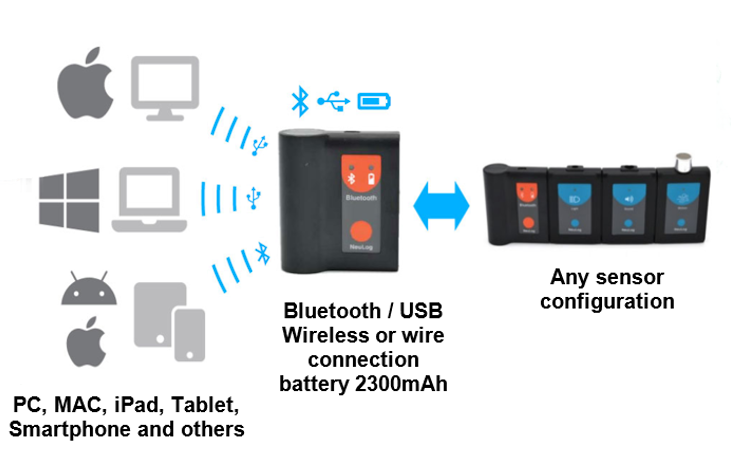
Logger-sensors received the experiment setup (duration, sampling rate, trigger) from the computer platform and then work independently. Although they work independently, for best sampling rate, the samples of the chain of sensors are synchronized.
The logger-sensors supply processed data (oC, oF, Lux, dB, pH, etc.) to the receiving device and also store it in their flash memory.
A chain of logger-sensors needs only one battery module. 30 days of outdoor experiment data can be saved by a chain of logger-sensors.
Each logger-sensor can save up to 5 experiments in its flash memory. These experiments can be transferred to a computer at any time afterwards.
The Bluetooth/USB module has a built-in, very large capacity, rechargeable battery and it can also be used as a battery module for outdoor experiments.
Batteries and/or Bluetooth/USB modules are required for one lab according to the number of work stations it contains and not according to the number of sensors.
NeuLog Logger-sensors use one plug and play, simple to use, and multi-function software for all computer platforms.
Seamless Simplicity:
Built with You in Mind
NeuLog strips away complexity so you can dive straight into your experiments without a hitch. Here’s how we ensure that using NeuLog feels effortless:
- Instant Recognition, No Setup: Plug in your sensors, and NeuLog immediately identifies them. No calibration, any configuration—just connect and go.
- Universal Compatibility: Whether you’re using a PC, Mac, Linux system, iPad, tablet, or smartphone, NeuLog’s single software platform works seamlessly across most devices.
- Less to Manage: NeuLog keeps things simple and efficient. With a single Bluetooth/USB module, you can connect any combination of sensors to any computer platform.
With NeuLog, you spend less time troubleshooting and more time doing what you love: engaging with your students.
The Power of NeuLog:
Powerful Insights, Limitless Potential
While NeuLog is simple to use, it doesn’t compromise on robust capabilities. From data collection to in-depth analysis, NeuLog empowers users with professional-grade features:
- On-the-Go Memory: Each sensor is equipped with built-in flash memory for outdoor experiments.
- Effortless Connectivity: NeuLog simplifies communication through a single Bluetooth/USB module, ensuring that your focus stays on the experiment—not on troubleshooting connections.
- Data, Your Way: Visualize experiment results in the format that works best for you—Graph, Table, Dots, Area, or Grid views. It’s all about seeing the story behind the data.
- Advanced Built-in Analysis: Perform advanced mathematical manipulations and analysis directly within the software. There’s no need to rely on external tools to extract meaningful conclusions.
By balancing simplicity with sophisticated tools, NeuLog is your partner in creating a seamless journey from observation to discovery.
NeuLog Recommended Sets:
Tailored Solution for Every Experiment
Whether you’re working in a classroom, a laboratory, or out in the field, NeuLog sets are curated to ensure you have everything you need to start exploring right away.
Recommended Sets by Subject:
- Physics: Mechanics, electricity, sound, light, heat, and more.
- Biology: Human body, photosynthesis, ecosystems, and other life science studies.
- Chemistry: Producing electricity, ions in solution, acid rain, titration, distillation, and more.
- Environment: Sea water properties, air pressure and altitude, dew point, Raleigh scattering, GPS, temperature, humidity, and more.
Recommended Sets by School Level:
- Elementary: Simplified sets for introductory experiments that spark curiosity.
- High School: Advanced sets for deeper exploration of scientific concepts.
- Higher Education and Research: Comprehensive sets designed for complex, multi-variable experiments.
Why Choose a NeuLog Set?
- Curated for Simplicity: Each set includes all the essential sensors and tools to get started quickly, without worrying about compatibility or missing components.
- Versatility for Any Project: From basic science experiments to advanced research, there’s a set designed to fit your goals.
- Mix and Match – Your Experiment, Your Way: NeuLog sensors are sold individually or as part of a set, so you can select exactly what you need—no more, no less.
- Future-Ready: As your needs evolve, NeuLog sets are modular and expandable, allowing you to add new sensors without replacing your entire setup.
Coding For Young Students – The Next Big thing
5/9/2017
Why should we teach coding at a young age?
Around the world, students from elementary school and up are increasingly acquiring basic coding skills. Governments, educators and tech industry advocates argue that a basic understanding of coding and how electronic devices actually work is crucial nowadays. This is important for the students’ future career but also to their countries economy and tech industry.
Coding can seem intimidating or boring but if taught at a young age these assumptions can be disparaged and students can realize how creative this field is. Coding help develop problem solving skills, logical thinking, persistence, collaboration, communication and is a real empowering activity.
The earlier we introduce children to coding, the more comfortable they will be when coding will be introduced later down the line at a higher level.
What does leading people in the industry say?
|
Bill Gates Chairman, Microsoft Learning to write programs stretches your mind, and helps you think better, creates a way of thinking about things that I think is helpful in all domains. |
Mark Zuckerberg Founder, Facebook Our policy at Facebook is literally to hire as many talented engineers as we can find. There just aren’t enough people who are trained and have these skills today. |
|
will.i.am Musician/The Black Eyed Peas and Entrepreneur Here we are, 2013, we ALL depend on technology to communicate, to bank, and none of us know how to read and write code. It’s important for these kids, right now, starting at 8 years old, to read and write code. |
Richard Branson Founder, Virgin Group Whether we’re fighting climate change or going to space, everything is moved forward by computers, and we don’t have enough people who can code. Teaching young people to code early on can help build skills and confidence and energize the classroom with learning-by-doing opportunities. I learned how to fly a hot air balloon when I was 30,000 feet up and my life was in the balance: you can learn skills at any age but why wait when we can teach everyone to code now! |
Why teach coding with a robot?
A robot is a mechanical device that can be programmed to follow a set of instructions. A robot includes a processing unit, sensors to perceive its environment, and motors and actuators to move its limbs or wheels. So, why teach coding with a robot? It makes coding even more fun! It makes coding less abstract, you actually see the result of what you coded in the real world. On the way, students learn some science, engineering and math.
Robots are already part of everyday life, but over the coming decades we will see them more and more, therefore the robotics field will continue to grow and increase in job prospects.
Why teach coding with Sense?

Sense is a robotic and computer programming system which allows users to explore, problem solve, and advance their computer programming abilities from just starting in visual block programming, to Python and C languages.
The sense platform can be expanded by over 45 different NeuLog sensors so that you can create solutions and codes the world has never thought of for any problem you try to overcome.
Students can program the Sense via the “RoblocklySense” programming platform which runs through your browser. It is very friendly and it is easy to create and run robotics programs.
Most Beautiful Graphs in Physics
9/6/2016
Every scientist knows that a nice looking figure can be very efficient in getting your paper published. A lot of NeuLog experiments generate really esthetic and interesting graphs. I gathered the top seven graphs for physics:
1. Simple Pendulum
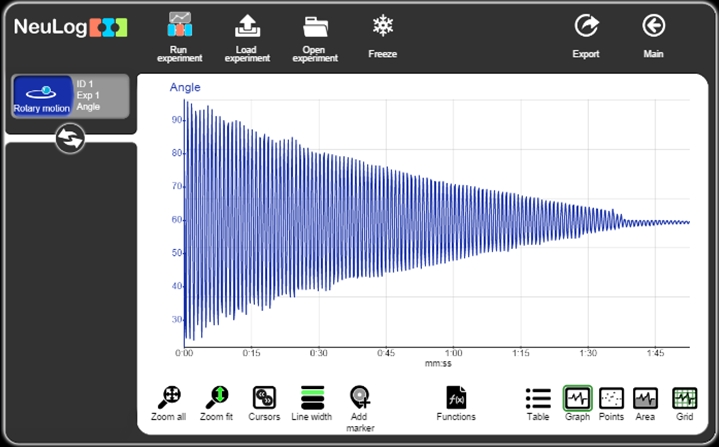
The location of a mass swinging back and forth on a thread was measured by a rotary motion sensor. Friction causes it to have slightly smaller amplitude each swing until decay.
2. Sound Waves
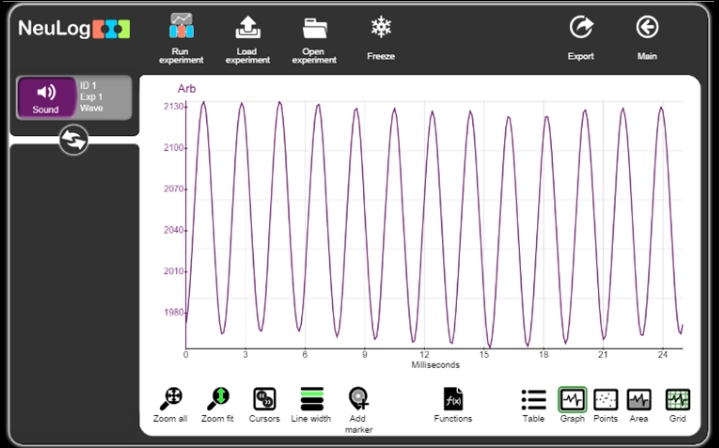
When hit by a hammer, the tines of a tuning fork vibrate back and forth pushing the air molecules around them. When the tine moves forward the molecules are pushed together creating a compression and when the tine moves backward it creates a rarefaction (low pressure region). The compressions and rarefactions were detected by a sound sensor. This created a nice recurring pattern.
3. Sound Beats
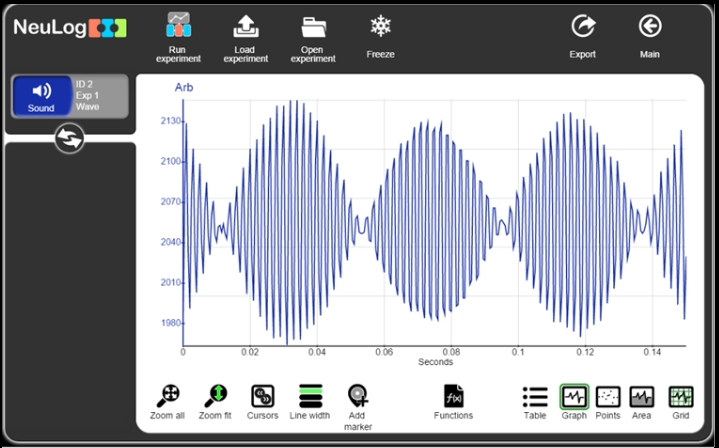
In this experiment, two tuning forks with different frequencies were hit to create a stunning graph that demonstrated wave interference. Wave interference is a phenomenon which occurs when two waves meet while traveling along the same medium. When two waves interfere, the resulting displacement of the medium at any location is the algebraic sum of the displacements of the individual waves at that same location.
4. Thermal Conductivity
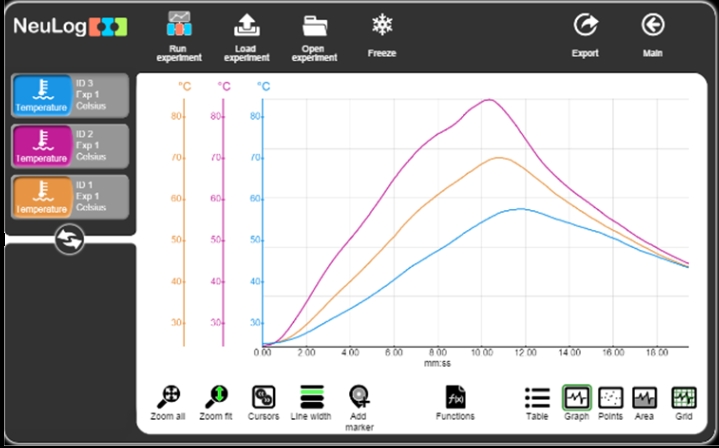
In this experiment, three different metals were heated and then cooled down. Their temperature was measured with the NeuLog Temperature sensor. The composition of the atoms in the material affects how the temperature changes.
5. Impulse and Momentum
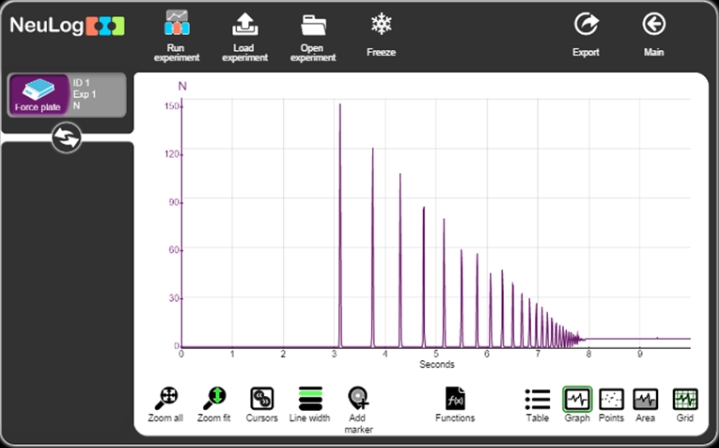
In this experiment, a basketball was dropped on a force plate sensor. The graph shows the force that was applied on it. Impulse and change in momentum values were calculated using this great graph. The interesting thing about this experiment is that not only did the ball height decrease over time, but there was also less time between each bounce.
6. Magnetic Field
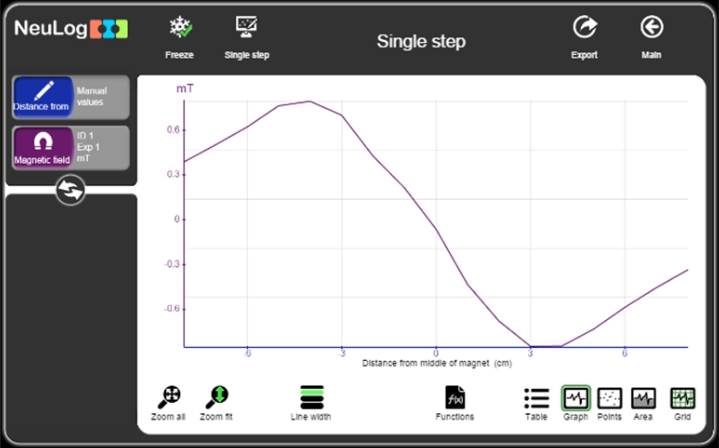
In this experiment, the magnetic field strength was measured at different locations on a bar magnet. This created a graph that has perfect rotational symmetry.
7. Charging a Capacitor
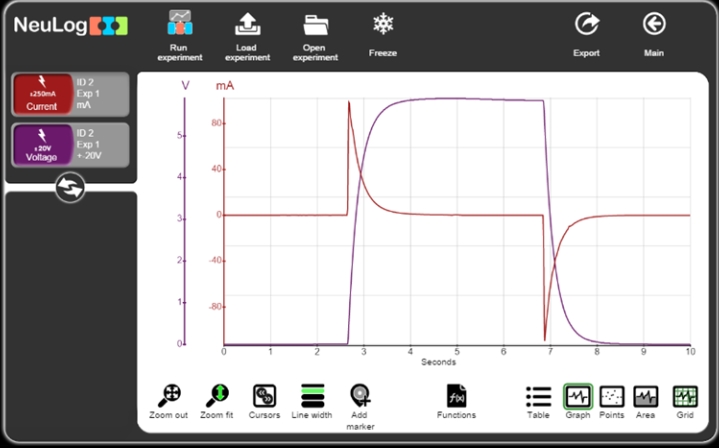
In this experiment, voltage and current were measured while a capacitor was charged and discharged. The current graph also has excellent rotational symmetry.
Light sensor brought to light
05/26/2016
One of the first sensors I worked with was the light sensor. It is amazing how this sensor can be used in so many fields of science. I started by creating experiments that teach the most basic principles of light.
The Light and Dark Colors experiment demonstrates the principle of light reflection and absorption. When visible light (that contain all the colors), completely reflects from an object, this light appears white. When the object completely absorbs all the light, it is recognized as black. This was done by projecting light on white, grey and black papers and measuring the reflected light. One of the responses I received from teachers is that young students finally understood why it is not a good idea to wear a black shirt on a sunny day.
Projecting Light on a white paper and measuring the reflected light.
The second experiment I want to tell you about is a really fun one, Colors of Light. In this experiment, you combine color filters and colored flashlights in order to detect the light coming through the filters. As an example, a red filter transmits (and reflects) mostly red light and absorbs the rest, while a blue filter does the same with blue color. So what will be the light intensity if we place a red filter on a blue flashlight? Conduct the experiment and you’ll see (and measure of course!).
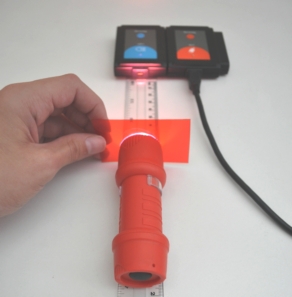 Colorless flashlight with red filter
Colorless flashlight with red filter
At the end of the experiment, you will find some fun educational activities you can do with the colored flashlights and filters (those items are included in our Light kit).
What’s great about this sensor is that it has three different ranges of light intensity. This way, you can choose the best range according to your experiment. When measuring light outdoors I like to use the 0 to 150,000 lx range (like in the Rayleigh Scattering experiment). When I measure light in a dim room (like in the Light and Shadow experiment) I use the 0 to 1000 lx range. For the rest of the experiments I use the middle range (0 to 6000 lx).
Sensors that work great along with this sensor:
• UVA
• UVB
• Temperature

